

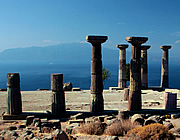
A landscape overflowing with ancient sites, from 5000B.C. homes at Troy to Hellenic and Roman cities and temples. Add to this a beautiful coastline, "modern" battlefields, glorious weather and friendly people we thoroughly enjoyed this holiday in Turkey.
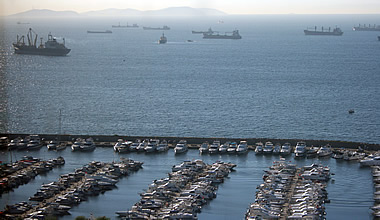
In 2006 when we returned to Turkey we landed at Istanbul and, for convenience, stayed the first night outside the city at the Crowne Plaza Hotel, with a fine view of the busy Sea of Marmora shipping lanes leading to the city harbours. There's something fascinating about working cargo ships - I found the same in Shanghai watching the barge traffic on the Huangpo river, wondering where they'd come from and where they were going and how the trade had been going on in much the same way for centuries.
We used the hotel shuttle the first evening to get to the hotel and then the following morning picked up our hire car at the airport and drove out west towards the Gallipoli peninsula, where the only possibility for lunch on the way was a Burger King (which we actually quite enjoyed!) at Kasan, right on the road so it's easy to find!
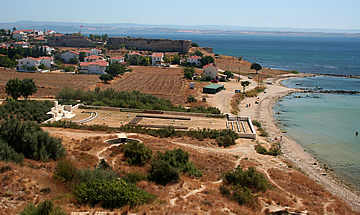
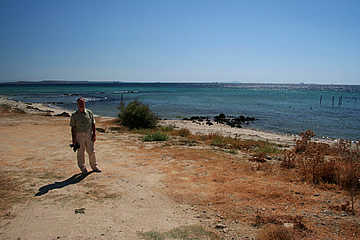
Our intention was to explore the 1915 battlefield sites; though Andrew had been here previously many years ago, this was completely new to me. It's a beautiful area, with magnificent beaches, but rather sad for anyone who knows its history which is described on a separate page on Gallipoli where military references are explained - here I concentrate on the more social aspects of the visit.
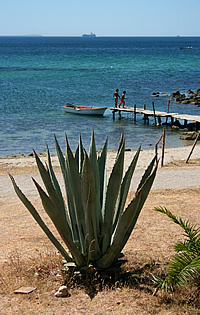
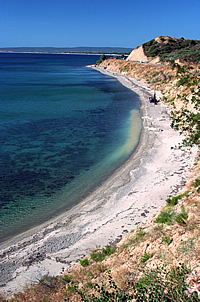
Choosing comfort over convenience, we stayed at the Hotel Kolin at Çanakkale, on the opposite side of the Straits to the Gallipoli peninsula. The hotel was fine, though with a tendency to deliver meals different to what we had ordered, this was forgiven for the fantastic fresh cherries and yoghourt at breakfast. We even managed an hour by the pool here one afternoon for an unusual interlude of R & R! A wonderful view west from our room across the Gallipoli straits - particularly fine at sunset.
The 30-minute ferry crossing from Çanakkale to Eceabat is an adventure in itself but does cut into the time available to tour the battlefields.
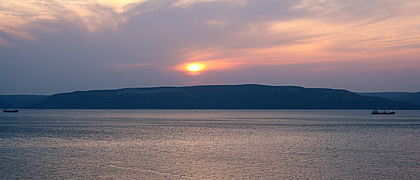
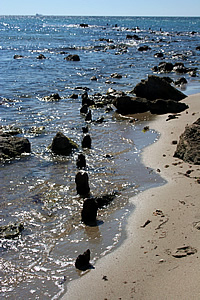
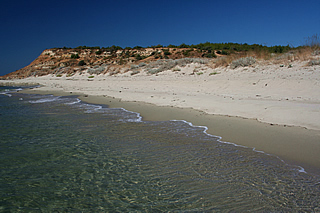
The peninsula has a wonderful unspoilt coastline, with very little evidence of tourism. 'V' Beach was deserted when we visited, apart from two children having great fun jumping from a rickety wooden pier into the sea. Here on the beach we discovered the Mocamp bar/restaurant and had an excellent lunch of chicken and chips and ice-cold beer.
We also ate the local food in Çanakkale and found it very good: we particularly enjoyed meat kebab, tomato salad in flat bread freshly made in a roadside café.

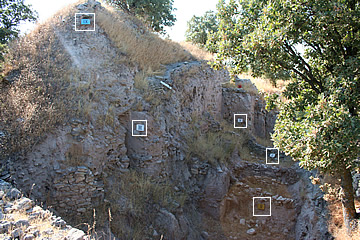
I was very much looking forward to visiting Troy - such a well-known school-learned history of the war between the Greeks and Trojans for the return of Helen, the wife of Menelaus, 'kidnapped' by Paris.
Paris, son of Priam of Troy, when asked to choose between the most beautiful of the goddesses Hera, Aphrodite and Athena chose Aphrodite because she promised him the most beautiful woman, Helen, as his wife. Helen had suffered a previous kidnapping attempt so that when Menelaus won her he made all her previous suitors (of which there were many) promise that if she were ever kidnapped again they would come to his aid. Agamemnon, the brother of Menelaus, led the troops into Troy but they were delayed at Aulis by lack of wind for their sailing ships.
Agamemnon had angered the goddess Artemis and in order to propitiate the goddess he was to sacrifice his daughter Iphigenia. He tricked his wife, Clytemnestra, into bringing Iphigenia to him, by promising that she was to be married to Achilles. An excellent book, The Penelopiad by Margaret Atwood, explores possible aspects of this story - Penelope was Helen's cousin and wife to Odysseus.
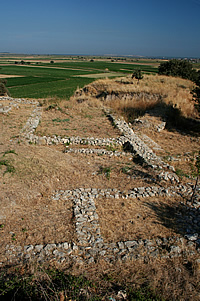
Anyway, the winds returned, the Greeks sailed and after some time discovered where Troy was located and went into battle, as Priam would not return Helen. The Greeks besieged the city for ten years without success and finally employed the famous Trojan Horse to smuggle troops inside the walls (Greeks bearing gifts etc.) The Greek ships apparently sailed away and the Trojans, ignoring warnings from Cassandra, brought the horse into the city. That night while the city slept, the soldiers climbed out of the horse, opening the city gates to allow the returning Greeks to enter, and set fire to the city and slaughtered the inhabitants.
Whether any of the legendary events leading up to the Trojan Wars were a reality is open to question. Homer's epic Odyssey and Illiad, though purporting to tell of these events, were written many centuries later and are probably an agglomeration of several different wars.
Abandoned after the wars, Troy became known as Ilium and was ruled over by Alexander the Great and then occupied by the Romans, finally declining under Byzantine rule. It would once have held a very strategic position at the entrance to the Dardanelles and this may have been the reason for the wars - i.e. a dispute over trade routes, but the coast has receded and this must have contributed to its decline.
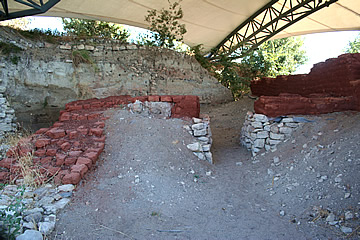
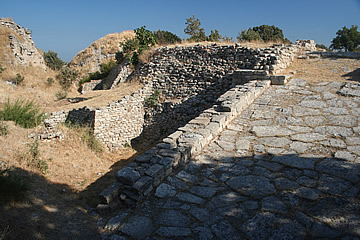
In 1822 McClaren proposed the archaeological site at Hisarlik as the legendary Troy. In 1870 the German archaeologist Schliemann opened the mound. He is a controversial figure, some regard him as little more than a treasure hunter and sensationalist whose "archaeological" techniques destroyed much of the later layers of this complex site in his haste to discover remains from the "Trojan War" era. An excellent book by Peter Ackroyd The Fall of Troy is based on Schliemann.
In 1882 and later in 1932 Dorpfield and Blegen respectively brought their experience to bear on the site and the nine different levels of which it is composed began to be expertly analysed.
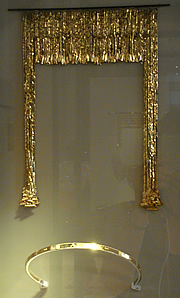
The oldest level, Troy I, is early Bronze age dating to almost 3000B.C. and consisting of a small fort of which almost nothing remains.
Between 2500 and 2200B.C. the city Troy II, was developed, though not greater in extent to the earliest settlement, it consisted of orderly houses (megarons) with the largest at the highest point. Gates in the city walls were approached by ramps. Schliemann found treasure at this level which he proclaimed as "Priam's Treasure". Much of this is now held in Russia though some can be seen in Berlin and Istanbul.
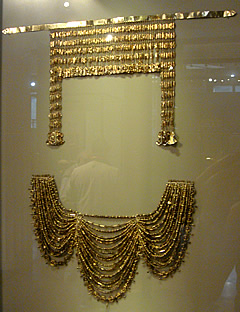
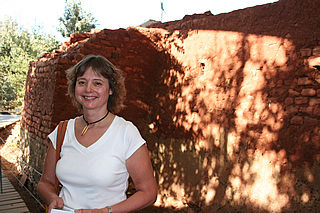
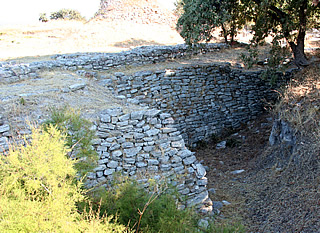
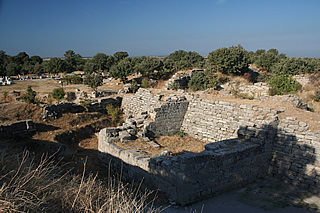
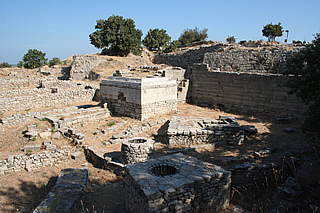
At the end of this period the city was attacked and destroyed by fire.
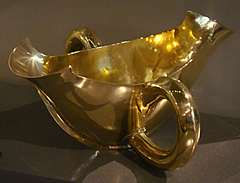
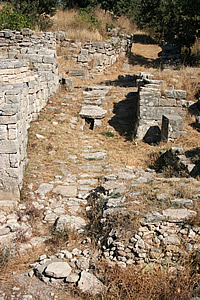
Between 2200 and 1800 B.C. this culture continues in Levels III to V but with less prosperity.
The town was again destroyed around 1800B.C. and at this point the fortunes of the town, Troy VI in the Bronze Age, revived after it was settled by invaders who built new walls enclosing an enlarged space - almost double the size of the earlier town - and well-constructed houses of different designs. This is possibly the age of Priam's Troy which came to an end with a strong earthquake in 1275B.C.
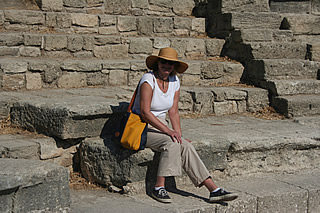
We now enter the era of Troy VII characterised by lowly buildings and again a destruction by fire in 1240B.C. followed by a fresh wave of settlement by incomers bringing a change of culture. There followed a gap of 400 years before Troy VIII - a Greek city, and then followed the Roman period, Troy IX, between 300B.C., and 300A.D.
This is a truly atmospheric place where one can imagine difficult lives were led, often in fear of attack, but where a civilisation flourished for a time.
The University of Cincinnati has an excellent educational website on Troy.
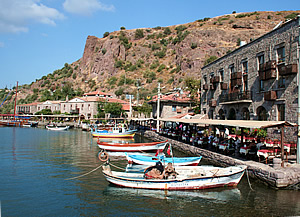
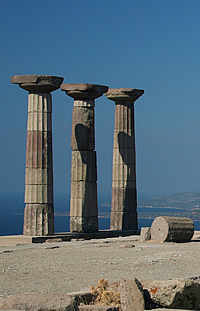
An 18km winding road led to Assos - the final drop to the harbour is extremely steep! This is a picturesque spot, full of small hotels and pensions, everyone eating breakfast at the outdoor tables when we arrived.
Driving back up to the old village we made our way to the Temple of Athena, built in 530B.C. and with magnificent views out to the Aegean and the island of Lesbos. The temple must have been highly visible from the sea and an important landmark for sailors.
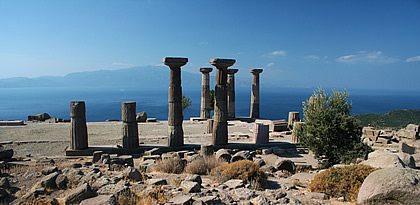
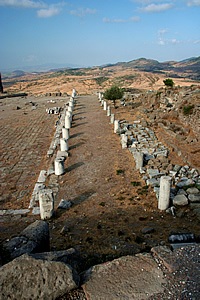
Lunch in Ayvalik at Oz Canli Balik right on the harbour wall - very good meat kebabs and Eves Pilsen - before making for Bergama and the ancient ruins of Pergamon.
There are significant ancient remains here and we wanted more than a quick visit. Unfortunately the choice of hotels was very limited and we ended up staying at the Bergmoy Hotel which has little to recommend it apart from location but is OK for one night.
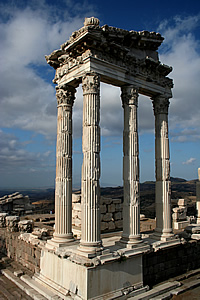
Following the death of Alexander the Great in 323 B.C. his generals took over different parts of the conquered territories. Lysimachus controlled Anatolia and deposited 9000 talents there for safety in the charge of Philetairus. Although Lysimachus was defeated by the Seleucid Antiochus in 281B.C., Pergamon and its treasure was retained by Philetairus. Pergamon was passed on to his successors, became an ally of Rome and was given most of the Seleucid possessions in Western Anatolia after the defeat of Antiochus IV by the Romans. Many of the buildings to be seen at Pergamon were built during the reign of Eumenes II, 197 - 159 B.C.
Although there is a well-known massive red brick structure in the modern city, formerly a Greek temple to the Egyptian god Serapis and later a Byzantine basilica, we were interested in the Greek and Roman remains of the two principle areas: the Acropolis high above modern Bergama, and the Asclepion area to the west of the city.
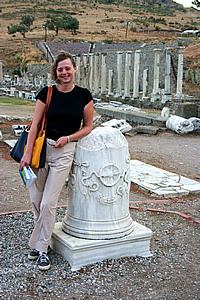
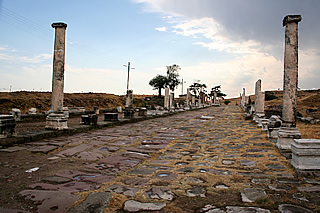
The Asclepion, sanctuary of the god of medecine and healing, Asclepios, served as a sort of medical centre. Dreams were used in the diagnosis of complaints in the earliest times and the waters from a sacred well were also used for treatment.
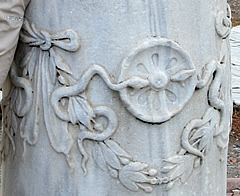

Galen the prominent medical researcher, was born in Pergamon around 130A.D. and practised and taught here, his theories becoming highly influential in Western medicine. He dissected animals to study anatomy and it was he who first demonstrated that arteries carry blood.
A colonnaded Sacred Way from the Roman period leads to the site entrance where a courtyard is surrounded by the principal buildings.
The circular treatment room is well-preserved. Originally with two storeys only the lower level, below ground, remains, but the arched alcoves in the walls can be clearly seen and a tunnel leading to the sacred well is intact. There was also a library which would probably have included medical texts for the doctors as well as reading material for patients. With a Roman theatre as well this complex seems to have catered not only for the physical well-being of patients.
Asklepios is usually depicted with a staff around which a snake is entwined. This has continued through the millenia to be a symbol of the healing arts. A snake might seem an odd choice for such a symbol and the reasons for its use are disputed. A particular type of non-venomous snake was allowed into the Asklepion sanctuaries, it is now known as an Aesculapian Snake.
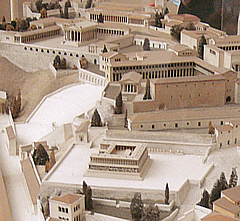
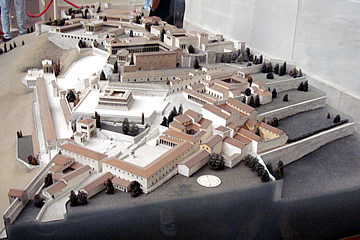
The Acropolis is a rather larger site occupying a magnificent position high above the modern city and with extensive views. The complex included a library and theatre as well as temples and so was not purely focussed on religion.
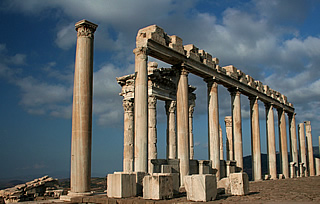
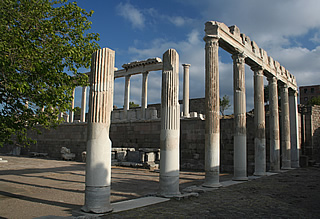
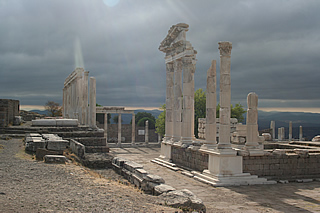
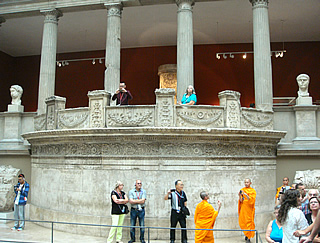
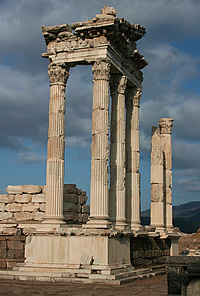
The Temple of Trajan, which has been partially reconstructed, is the only Roman building here, having been built in the second century A.D. by Hadrian, Trajan's successor. The remaining edifices are Greek in origin.
The famous library, built in the time of Eumenes II, was given by Mark Anthony to Cleopatra and transferred to Alexandria. Pergamon is also famous for the invention of parchment as an alternative to papyrus which became necessary when the Egyptians banned its export. In contrast to papyrus, which is made from a plant, parchment is made from animal skin.
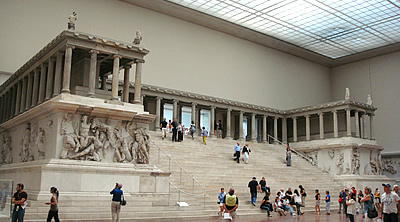
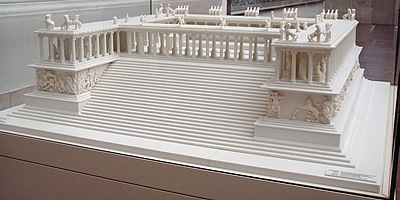
The even more famous Pergamon Altar, now in the Pergamon Museum in Berlin, is a wonderful evocation of of life in ancient Greek cities. Built during the reign of Eumenes II around 200/150 BC it is a massive structure, dwarfing the human figure.
The walls surrounding the steps leading to the fire court above are decorated with a high relief frieze depicting the battle between the Giants and the Olympian gods. The giants were believed to be partly formed of snakes, hence the preponderous of these in the frieze.
The sense of violent movement achieved in the sculptures is startling.
The fragments were excavated from the acropolis towards the end of the nineteenth century by the German archaeologist Carl Humann. All fragments of the frieze were brought back to Berlin.
A replica of the front part of the altar, including the fire court, was eventually created, incorporating the original fragments.
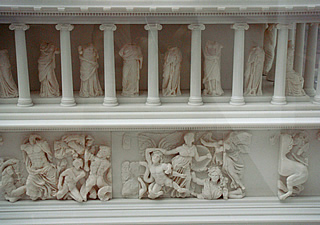
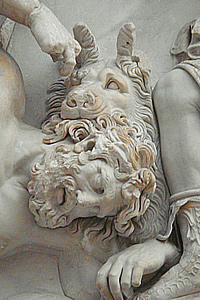
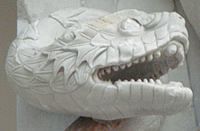
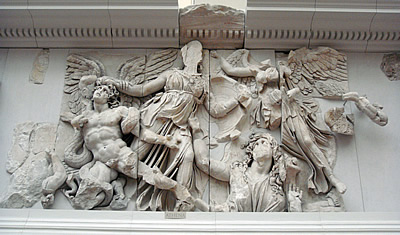
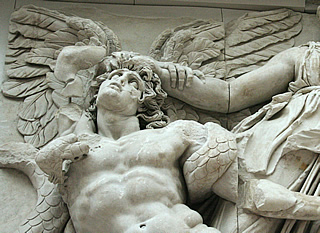
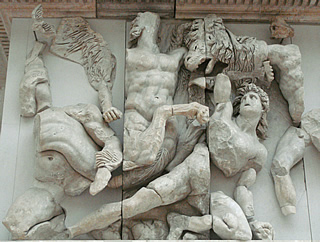
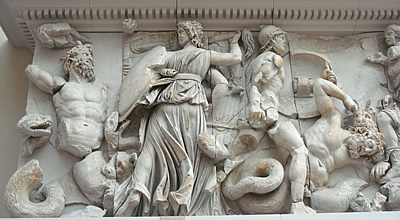
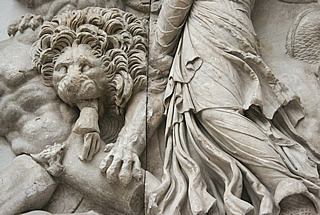
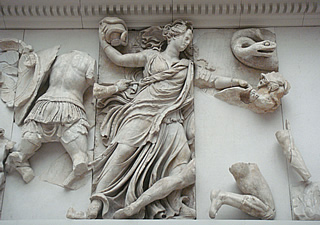
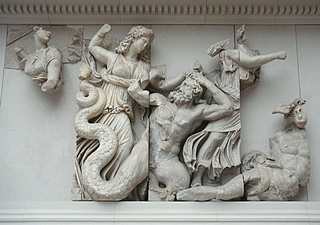

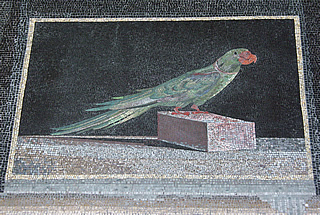
The court of the fire altar was also decorated with a carved frieze, this one telling the story of Telephus, the legendary founder of Pergamon and son of Hercules and Auge, a priestess of Athena. Fragments of the frieze are also displayed in the reconstructed fire court of the altar in the museum. On the floor is an incomplete mosaic showing garlands of fruit, leaves and berries with small birds, and a beautiful panel with a parrot.
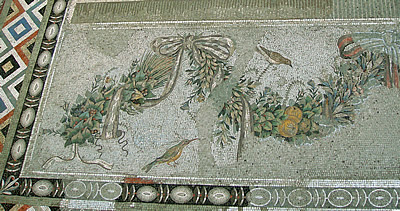
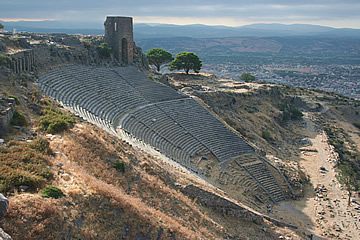
The most impressive of the remains at Pergamon is without doubt the vertiginous theatre, also built during the reign of Eumenes II. It had a capacity of 10,000 people seated in 80 rows - the top row is so high above the stage area it's a wonder those seated there could make anything of what was happening on the stage far below! However, they had the most spectacular views to look at as an alternative!
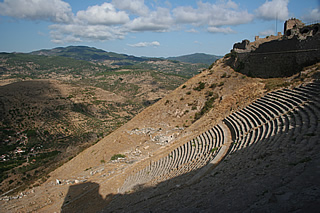
Such impressive remains, at both sites, are well-worth the effort to reach this area and the poor accommodation, but if you are pushed for time then make for the theatre on the Acropolis - an utterly fantastic structure with the most incredible outlook for miles across the surrounding landscape.
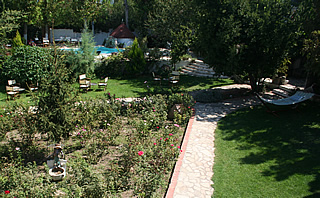
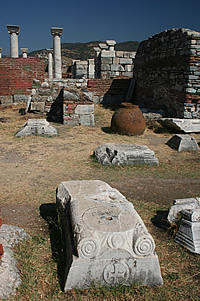
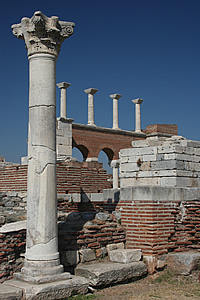
Selcuk was our base for exploring this more southern region of Turkey.
We stayed at the Hotel Kalehan and were very impressed: the room was very good - clean and with excellent air-conditioning; the staff very friendly and helpful. The pool area has a bar and is great to come back to after a day's touring, plus the peaceful garden has lots of sitting places and a double hammock for a post-lunch snooze in the shade - if you have the time!
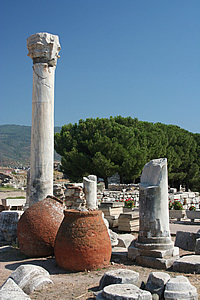
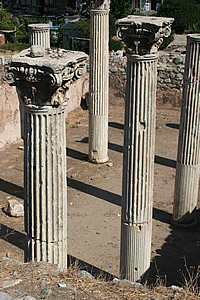
In the town we discovered the Café/Restaurant Tat and its engaging owner. We ate here two or three times during our stay and were never disappointed: excellent Iskender kebap.
St John is supposed to have lived and written his gospel in Selcuk. The basilica of St John is believed to be located on the burial place of the saint. Originally built by Justinian in the sixth century A.D., on the site of a smaller church, it fell into ruins and was converted into a mosque in the fourteenth century, being completely destroyed in 1402 by Tamerlane as he and his armies swept through the area.
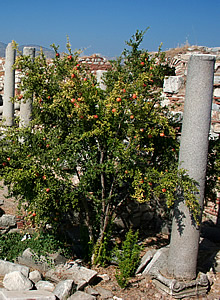
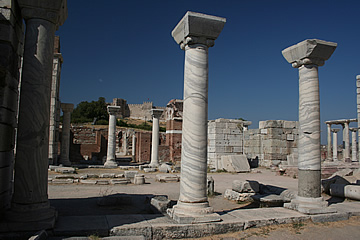
The restorations give a good impression of how fine the basilica must have been.
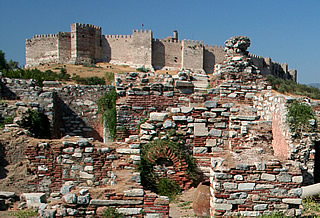
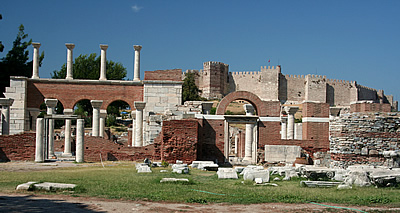
The well-preserved Byzantine fortress stands near the Basilica on the Ayasuluk hill. About 1500 years old it has fifteen towers in its surrounding walls which are remarkably intact.
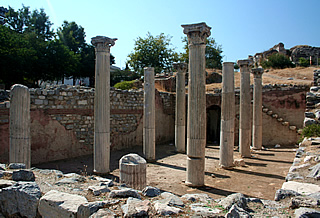
Reference: Traveller's Guide: Turkey by Dux Schneider.
Aphrodisias http://www.nyu.edu/projects/aphrodisias/home.ti.htm
Theatre at Aphrodisias http://www.whitman.edu/theatre/theatretour/aphrodisias/aphrodisias.htm